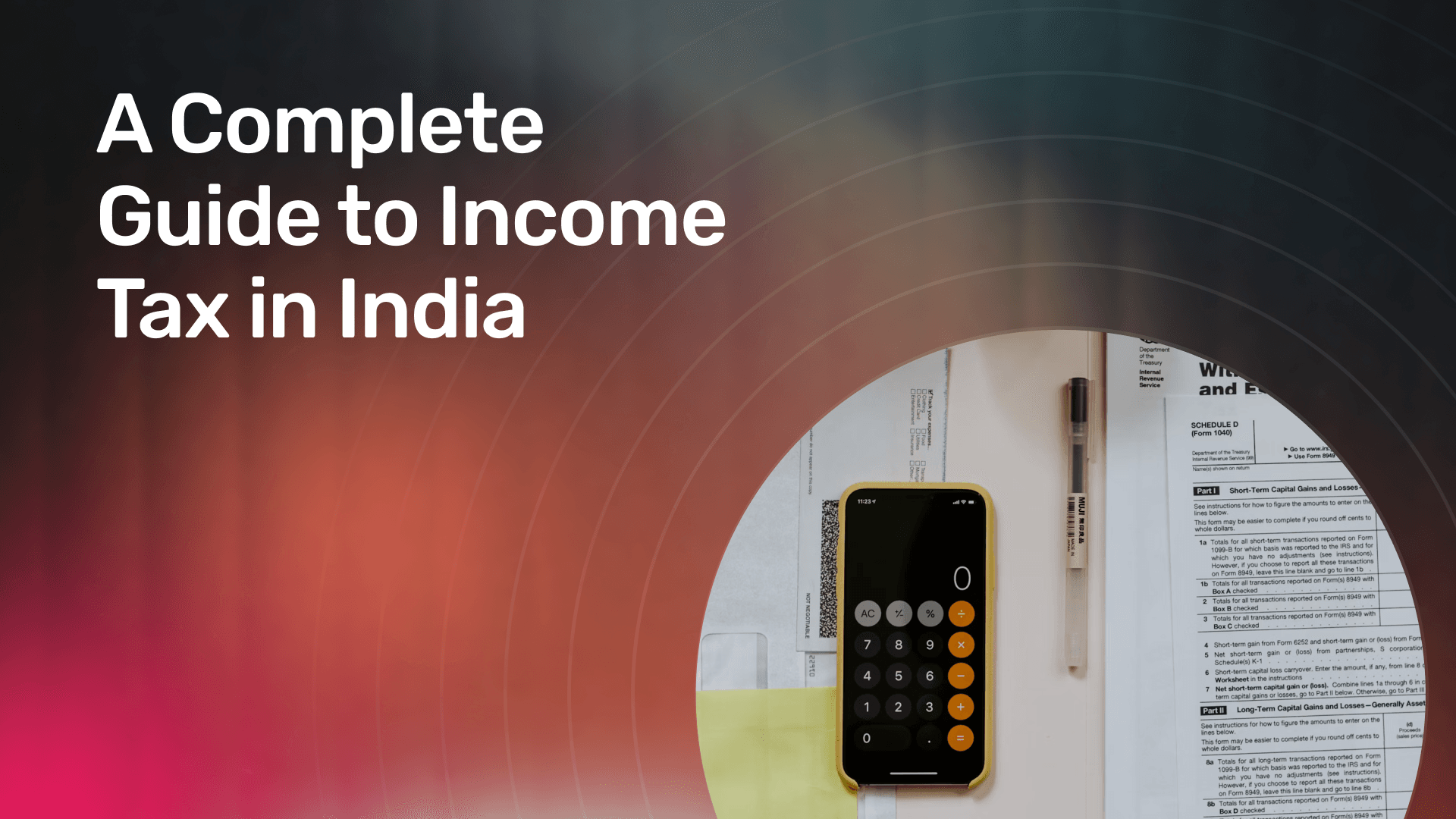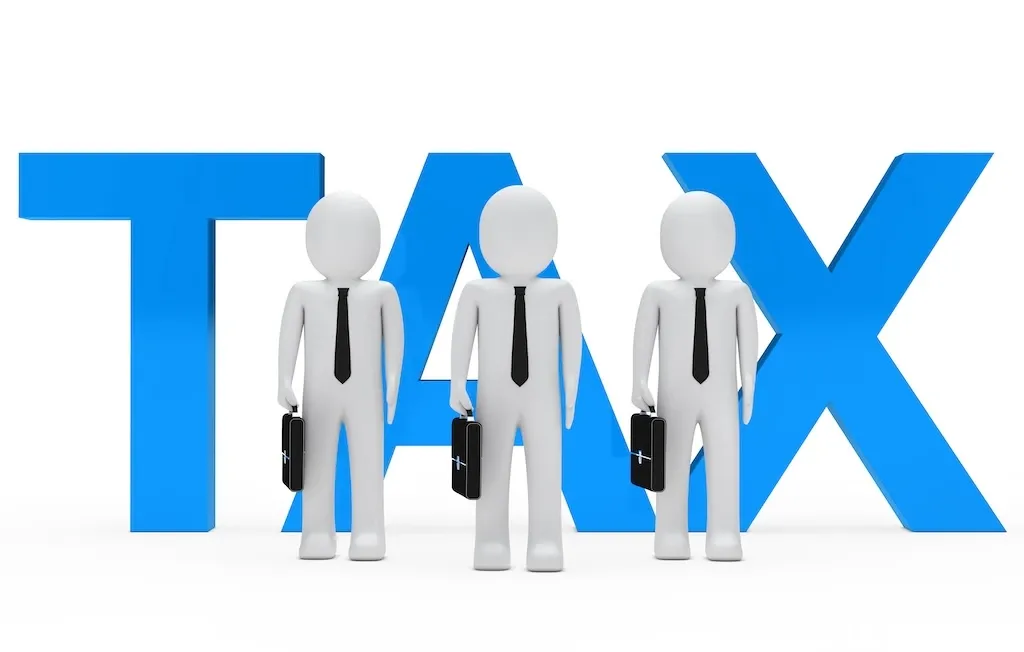A Complete Guide to Income Tax for Working Professionals in India
Filing taxes might not be the most exciting task, but whether you're a working professional or a business owner in India, understanding how income tax works is key to managing your finances. With the right information, you can not only stay compliant but also save money through smart tax planning.
This complete guide breaks down India’s income tax system in simple terms, so you can make informed decisions and avoid last-minute stress during tax season.

What is income tax in India?
Income tax in India is a direct tax collected by the Government of India on the income earned by individuals and businesses. It’s governed by the Income Tax Act, 1961, and administered by the Central Board of Direct Taxes (CBDT).
As a salaried individual or working professional, your employer usually deducts Tax Deducted at Source (TDS) from your monthly pay and deposits it with the government. However, it’s still your responsibility to compute your total income, claim deductions, and file your annual return. As a business, you are responsible for deducting TDS where applicable, maintaining proper books of accounts, and filing periodic returns.
Income tax in India is applicable to:
- Salaried individuals
- Freelancers and consultants
- Business owners and professionals
- NRIs (based on residential status)

Types of income tax regimes in India
From FY 2020–21 onwards, individual taxpayers have the option to choose between two regimes: the Old Tax Regime and the New Tax Regime. While businesses follow a separate tax structure, understanding individual tax regimes is important for sole proprietors or startups where business income is taxed in the owner's hands.
Old tax regime
The old regime provides multiple exemptions and deductions, allowing individuals to reduce taxable income. Businesses and professionals filing under presumptive taxation (Sections 44ADA/44AE) can also leverage specific deductions.
New tax regime
Designed to simplify tax calculations for individuals, this regime offers lower rates but fewer deductions. Businesses registered as sole proprietorships may still fall under individual taxation, making this regime relevant in such cases.
Income tax slabs for FY 2025-26
Let’s compare how income is taxed under both regimes.
Old regime
| Annual income (₹) | Tax rate |
| Up to ₹2.5 lakh | Nil |
| ₹2.5–5 lakh | 5% |
| ₹5–10 lakh | 20% |
| Above ₹10 lakh | 30% |
New regime (Default)
Annual income (₹) | Tax rate |
| 0 to 4,00,000 | 0% |
| 4,00,001 to 8,00,000 | 5% |
| 8,00,001 to 12,00,000 | 10% |
| 12,00,001 to 16,00,000 | 15% |
| 16,00,001 to 20,00,000 | 20% |
| 20,00,001 to 24,00,000 | 25% |
| 24,00,001 and above | 30% |
For the financial year 2025–26, the rebate has been raised from ₹25,000 to ₹60,000. Under the updated tax regime, individuals with an annual income of up to ₹12 lakh won’t have to pay any income tax, thanks to the enhanced rebate. Additionally, salaried taxpayers can enjoy zero tax liability on income up to ₹12.75 lakh, considering the standard deduction of ₹75,000. Businesses structured as LLPs or companies follow a separate corporate tax structure.
Please note: The new regime is now the default option. However, taxpayers can still choose the old regime if it better suits their income and deductions.
Additional charges
Both regimes for individuals and corporate taxpayers may include:
- Health and education cess: 4% on the tax amount
- Surcharge: Progressive rates (10% to 37%) for high-income individuals and businesses

Section 87A rebate - FY 2025-26
Section 87A provides a tax rebate to individuals with lower taxable income.
| Tax regime | Eligible income limit | Maximum rebate | Net tax payable |
| Old Regime | Up to ₹5,00,000 | ₹12,500 | ₹0 |
| New Regime | Up to ₹12,00,000 | ₹60,000 | ₹0 |
This means if your total income after deductions (if any) is within these limits, your final tax liability will be zero.
Note for businesses: This rebate is only applicable to individuals, including professionals or sole proprietors. Companies, LLPs, and partnerships are taxed separately under corporate tax provisions.
Heads of income
Income is grouped into five categories. While this mainly applies to individuals, some are also relevant to businesses or sole proprietors.
- Income from salary
Includes basic salary, HRA, allowances, bonuses, and perquisites. Salaried employees get a standard deduction of ₹50,000 in the old regime and ₹75,000 in the new regime.
- Income from house property
Relevant for both individuals and businesses that earn rent. Tax benefits include:
- 30% standard deduction
- Interest deduction on loans (₹2 lakh limit for individuals)
- Income from business or profession
Covers income earned by self-employed individuals, freelancers, professionals, and business owners. Key deductions include:
- Business expenses
- Employee salaries and benefits
- Rent, electricity, and internet bills
- Depreciation on assets
Tip for businesses: Small businesses can opt for presumptive taxation under Section 44AD/44ADA for simplified compliance and reduced paperwork.
- Income from capital gains
From the sale of stocks, property, mutual funds, and gold. Separate tax rates apply for short-term and long-term gains.
- Income from other sources
Includes bank interest, dividends, gifts, or lottery winnings. For businesses, dividend income and interest from fixed deposits fall under this head.
Key deductions under the old regime
Deductions help reduce your taxable income. Here are some popular ones:
- Section 80C: Up to ₹1.5 lakh for PPF, ELSS, life insurance premiums, EPF, etc.
- Section 80D: Medical insurance for self and family (up to ₹25,000, or ₹50,000 for senior citizens)
- Section 80E: Interest on education loans
- Section 80G: Donations to specified charities (50% or 100% deduction)
- Section 80TTA: Savings account interest up to ₹10,000 (non-senior citizens)
- Section 24(b): Interest on home loan up to ₹2 lakh
- NPS Contribution: Additional ₹50,000 deduction under Section 80CCD(1B)
Businesses can claim deductions on business-related expenses like rent, travel, utilities, salaries, advertising, and more under separate sections.
Key deductions under the new regime
There are not many deductions in the new tax regime, but here are some of them:
- Standard deduction of ₹75,000 for salaried individuals and pensioners.
- Employer’s contribution to NPS (Section 80CCD(2))
- EPF contribution by the employer
- Deduction under Section 80JJAA (for new employment generation.
- Family pension deduction of up to ₹15,000 or 1/3rd of pension, whichever is lower.
It’s beneficial for those who prefer a straightforward system or don’t have significant tax-saving investments.

Tax filing process
Filing your income tax return (ITR) involves several steps. Here’s a step-by-step breakdown for individuals and businesses:
1. Determine your residential status
This affects how your global income is taxed. If you stay in India for:
- 182 days or more in a financial year, you’re a resident.
- Less than that, you may qualify as an NRI.
2. Choose between the old and the new regime (for individuals only)
Use a tax calculator to compare both regimes and select the one that results in lower tax.
3. Calculate gross total income
Add up all your income from the five heads.
4. Claim deductions
For individuals under the old regime or businesses under allowable expense categories.
5. Compute tax payable
Apply the applicable tax slab rates or corporate tax rates. Don’t forget to include:
- Rebate under Section 87A (if applicable)
- Cess and surcharge
6. File income tax return (ITR)
- Use the official Income Tax Portal
- Choose the correct ITR form.
- Individuals: Use ITR-1 to ITR-4 depending on income type
- Businesses: ITR-3, ITR-5, or ITR-6 based on structure
- Validate with Aadhaar OTP or DSC
- Submit before 31st July (unless extended)
7. Verify your ITR
Complete the filing process by e-verifying your return using Aadhaar OTP, net banking, or offline methods (like sending a signed ITR-V form to CPC Bangalore).
Important for businesses: Companies and LLPs must also file Tax Audit Reports, TDS returns, and advance tax payments, depending on turnover and tax liabilities.
Tips for tax planning
- Start planning at the beginning of the financial year (April–March)
- Keep digital and physical records of investments, expenses, and bills
- Use online calculators or consult a tax advisor
- Review your salary structure for tax-saving opportunities (like HRA or NPS)
- Avoid last-minute investments just to save tax - they may not suit your financial goals
- Reassess your regime choice every year - it may change depending on salary hikes, deductions, or lifestyle shifts
- Businesses should regularly reconcile books with GST and TDS filings
- Use professional accounting software to simplify compliance

Simplify tax management with Native Teams
Managing taxes and compliance gets more difficult when your business works with international employees or contractors. Native Teams helps you stay compliant, pay your workforce globally, and handle employment admin with ease - in India and 85+ countries.
With our Employer of Record (EOR) services in India, you get:
- Locally compliant employment contracts and documentation
- Automated payroll, tax calculations, and salary payments in INR
- Employee benefits, including health insurance and pension contributions
- Full compliance with Indian labour laws, tax regulations, and reporting requirements
- A central dashboard to track employment status, payslips, and tax summaries
We act as the legal employer in India, so you can focus on managing your team, while we handle the rest.
In summary
Income tax in India may seem confusing at first, but once you understand the regimes, slabs, and deductions, it’s easier to take control. Always compare your regime options, maintain proper documentation, and file your return on time.
Whether you’re salaried, self-employed, or working remotely, or are a business owner, smart tax planning can help you save more and stress less. And if you're managing income across borders, platforms like Native Teams can help simplify compliance.
